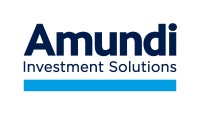Equity and Market Valuation Techniques: Jan 2022
CAPE and Other Market Valuation Methodologies
The U.S. equity market recently hit new highs but has retreated as bond yields have risen on a more hawkish tone from several Fed members, with some market commentators (and Fed officials) now looking for four rate hikes this year. Technology stocks were among the heaviest fallers, offering some credence to one valuation methodology which suggests that higher yields should necessitate a higher discount on future cash flows. With the duration of the S&P 500 close to 37 years at the end of 2021, it doesn't take much of a move in bond yields to begin to unsettle equity investors!
Included in this selection of articles is the second in a series of papers by Oliver Wyman offering a deeper comprehension of the U.S. equity market; this paper focuses initially on CAPE-based valuations before moving on to corporate profit margins. Other papers examine equity term structures and equity duration and the stock-bond relationship, while another looks at why it is only a very small number of companies that account for all the wealth creation in the U.S. stock market.

Lessons from Warren Buffett Owner Earnings (Oliver Wyman, 2021)
The second in a series of white papers from Oliver Wyman aims to lift comprehension of the U.S. equity market to a higher level. Split into two parts, this paper focuses first on CAPE-based valuations, and latterly on margins at U.S. corporates encompassing both the multiple and earnings components of equity prices.
The Cross-Section of Stock Returns Before 1926, and Beyond (Robeco, Dec 2021)
In this paper from Robeco, they investigate the cross section of stock returns between 1866 and 1926, using a proprietary database of almost 1,500 stocks. They assert that stock characteristics can explain over a quarter of the variations in stock returns.
CAPE Fear: Are market valuations a concern? (Dimensional Fund Advisors, 2021)
For compliance reasons, this paper is only accessible in certain geographies
Dimensional Fund Advisors questions whether metrics such as the CAPE ratio are of any relevance in asset allocation decisions.
Equity Premium Predictability Over the Business Cycle (VoxEU, 2021)
VoxEU’s paper argues that term spreads are a good predictor of recessions, and an investment strategy based on a recession probability model may be used to good effect to time the equity market and to enhance returns.
A History of Wealth Creation in U.S. Equity Markets (Alpha Architect, 2021)
In this summary article about the work of economist Hendrik Bessembinder, Alpha Architect notes that a just very few stocks account for almost all the wealth creation in the U.S. stock market. Behavioural errors exacerbate problems of poorly diversified portfolios.
Should Passive Investors be Paying 100x Earnings? (Behavioural Investment, 2022)
Behavioural Investment cautions about some of the issues passive investors face as potentially expensive stocks (and markets) become even more expensive, potentially reinforcing passive country allocations when assets are expensive by historical standards. Stretched valuations invariably lead to disappointing returns.
No Safe Harbour for Stockpickers (S&P Dow Jones Indices, Jan 2022)
S&P Dow Jones Indices notes that across global markets in 2021, but particularly in U.S. markets, conditions did not favour active managers, as measures of dispersion and volatility correlation declined sharply.
Modelling Equity Market Term Structures (Norges Bank, 2021)
This note from Norges Bank outlines a present value approach to estimating an equity term structure and enables measurement of equity duration, noting most of the value occurs beyond a time horizon of 10 years. Duration for U.S. and Japanese markets is between 20-25 years, while the UK and Europe lies between 15 and 20 years.
Motherlode: Market capitalisation and valuations (Hussman Funds, 2021)
John Hussman, President of Hussman Investment Trust, argues that on a number of market metrics, the current level of U.S. equity markets appears to merit a degree of caution.
Fundamental Drivers of Asset Returns (Norges Bank, 2021)
Norges Bank decomposes the key drivers of equity and bond market returns, which they argue are based on anticipated cashflows, inflation and real interest rates, and associated risk premia.
New Accounting Standards and Their Performance Impact on Quant Investors (2021)
This academic paper finds that changing accounting standards tends to adversely impact the returns of quant managers, particularly value investors, whereas price and size-based strategies remain largely unaffected.
Inflation and Its Impact On the Stock-Bond Correlation (Qontigo, 2021)
Qontigo investigates the relationship between stock and bond markets over the last 70 years, looking at bond and equity market returns in an attempt to determine the key triggers to shifts in the relationship.





